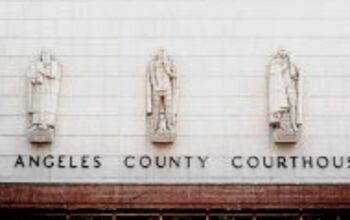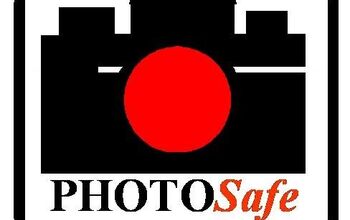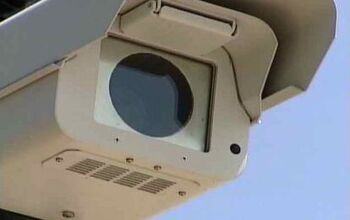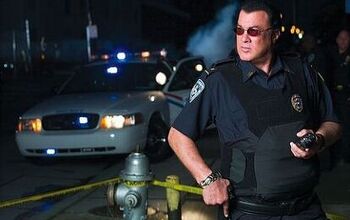Virginia DOT Defends Red Light Camera Study
In 2007, the Virginia Department of Transportation (VDOT) performed one of the most comprehensive statewide surveys of the impact of red light cameras on safety ( view report). It caused quite a stir upon its release. The study took advantage of seven years’ worth of data both before and after cameras were installed, examining a far more extensive dataset than most competing studies.
Despite the agency’s best effort to present automated enforcement in a positive light, the unavoidable results were that, on a statewide level, accidents and injuries increased where cameras were used. This outcome has proved to be an embarrassment for the Insurance Institute for Highway Safety (IIHS) which has been the primary organization generating research claiming that red light cameras improve safety. IIHS noted that VDOT essentially bent over backwards to accommodate the industry, but because the ultimate results were unfavorable, the VDOT report should be discarded.
“That the final conclusions of the [VDOT] study are guarded and more conservative than the results might suggest supports our belief that the negative results of the study cannot, and should not be cited and used as a deterrent to the implementation of red light camera programs,” a draft 2007 IIHS critique stated.
Essentially, IIHS argued that one should question the VDOT/Virginia Transportation Research Council (VTRC) study because the results conflicted with conclusions generated by IIHS itself.
“A large body of peer-reviewed research generally has found that camera enforcement reduces red light violations and injury crashes,” the final IIHS critique stated. “Results of a new study commissioned by the Virginia Transportation Research Council and completed in June 2007 appear to contradict these earlier findings, but there are significant methodological issues with the VTRC study that call into question the validity of its conclusions.”
The insurance industry’s financial interest in the issue of photo enforcement amounts to hundreds of millions of dollars annually. States like Arizona, California and Illinois impose license points on certain types of red light camera and speed camera tickets. That means for each photo ticket issued, the insurance companies have the legal right impose an annual monetary surcharge on the recipient of as little as $25 to as much as $1000 extra per year.
The draft insurance industry critique argued that VDOT’s model “underestimated” the benefits of red light cameras by using an improper statistical model influenced by the enforcement location selection process. IIHS chose two intersections and re-analyzed the data to illustrate the industry’s suspicion that VDOT’s methodology produced unfair results. VDOT countered this by doing a full-blown reanalysis following every IIHS recommendation.
“While findings regarding rear-end crashes and angle crashes did not change substantially, Table R1 below suggests that the approaches suggested by the reviewers would have caused red light running crashes to increase slightly,” VDOT explained in its response to IIHS.
Specifically, instead of a 42 percent increase in rear-end collisions, the cameras would be associated with a 48 percent increase in accidents. Angle collisions would increase 30 percent instead of 20 percent and “red light running” accidents would increase 15 percent.
In the final, published version of its paper, IIHS dropped the concrete analysis of VDOT’s equation but retained the vague criticisms about how the “highly unusual crash prediction model” was “unreliable.” In a November 2008 email, VDOT Associate Principal Research Scientist John Miller said that he intended to ask IIHS to include VDOT’s response on its website.
As of January 2010, IIHS had not done so. VDOT posted all of the raw data for its report online, inviting independent analysis and critique as the agency finalized its work. IIHS does not provide any raw data on its website that would allow independent verification of the industry’s claims.
View the full VDOT/VTRC point-by-point response in a 170k PDF file at the source link below. The draft of the IIHS report is provided with VDOT’s comments (“authors’ response”) given in gray shaded boxes.
Peer Review of 2007 VTRC Study and Author Response (IIHS / Virginia Transportation Research Council, 11/1/2007)
More by The Newspaper
Latest Car Reviews
Read moreLatest Product Reviews
Read moreRecent Comments
- Dale Quelle surprise.
- 3SpeedAutomatic Nice looking, but IIRC, there was an issue with these engines where a knock would develop. That may account for the very low milage. 🚗🚗🚗
- Redapple2 Used to watch F 1 a great deal. Now? F1 Random thoughts:1 Silly rules bug me. Must use 2 types of tire. Cant refuel. Drag reduction can only be used in certain areas of the track and only if you are so close to the car in front.2 Passing is rare. Pole sitter wins a high % of the time.3 A new team can only start in F1 if they get the blessing of the overlords. Evil gm Vampire was barred. How about this. Anybody with a car that meets the construction rules can try. If your speed qualifies and you pay the entry fee. You re in. So is anybody else. 4 I tune in for Martin Brundle's grid walk. In my life, it s must see tv. But he is often bumped or cancelled. Grid walk takes place 1 out of 3 or 4 races.5 So, because of this utter bull sheet and other points, I ve migrated to IMSA and MotoGP. I might catch a summary on the youtube.
- Redapple2 I retract my comments and apologize.
- Flashindapan I always thought these look nice. I was working at a Land Rover dealership at the time the LR3 came out and we were all impressed how much better it was then the Discovery in just about every measurable way.


































Comments
Join the conversation
As soon as there is GPS-speed limiters in vehicles, all this will be moot. This technology is possible, so why ain't the IIHS pushing it? I agree that the story here reminded me of the seeming selective use, misuse, and abuse of data within the ACGW circles... Follow the money... and you will arrive at the methods ... follow the money further ... and you will arive at the motivations ... follow it yet further and you will arrive at the recipients!
As soon as there is GPS-speed limiters in vehicles, all this will be moot. This technology is possible, so why ain't the IIHS pushing it? I agree that the story here reminded me of the seeming selective use, misuse, and abuse of data within the ACGW circles...Follow the money... and you will arrive at the methods ... follow the money further ... and you will arive at the motivations ... follow it yet further and you will arrive at the recipients!